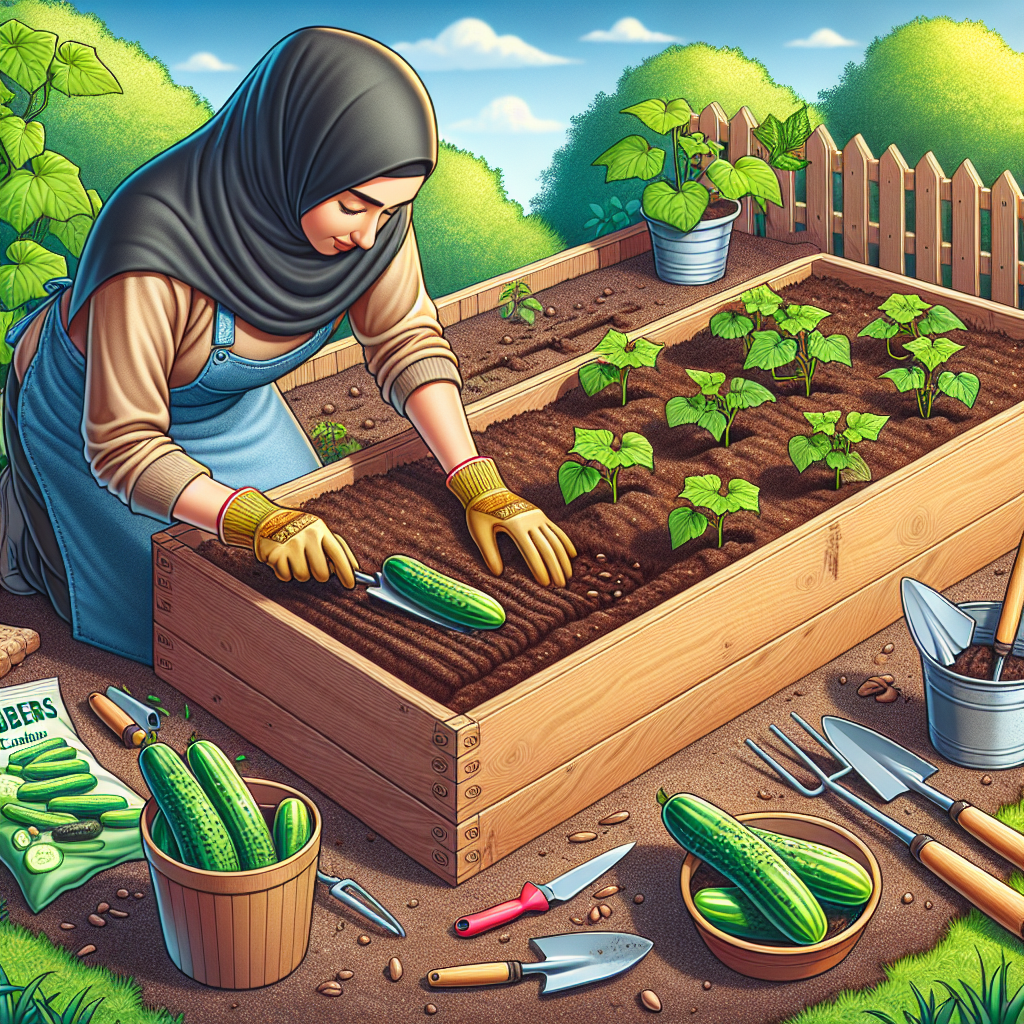
How do you plant cucumbers in a raised bed
How to Successfully Plant Cucumbers in a Raised Bed
Cucumbers are a popular garden vegetable, loved for their refreshing taste and versatility in a wide variety of dishes. If you're considering growing cucumbers in a raised bed, you're choosing a method that offers numerous benefits, including improved drainage, better soil quality, and easier access. In this article, we will explore the details of how to plant cucumbers in a raised bed, ensuring you get the best results possible. Whether you're a seasoned gardener or a beginner, this guide will help you cultivate a flourishing cucumber patch.
Understanding the Benefits of Raised Bed Gardening
Raised bed gardening has gained popularity for several reasons. Here are some benefits specifically for planting cucumbers:
- Enhanced Drainage: Raised beds provide superior drainage, which is crucial for preventing root rot in cucumbers.
- Better Soil Quality: You have control over the soil mix, allowing you to create the perfect environment for cucumbers.
- Reduced Pest Problems: Elevated beds can help keep pests like slugs and snails at bay.
- Extended Growing Season: The soil in raised beds warms up more quickly in the spring, allowing for an earlier planting.
- Accessibility: Raised beds are easier to reach, making it simpler to tend to your plants.
Choosing the Right Variety of Cucumbers
There are many cucumber varieties, and selecting the right one for your garden is crucial. Consider the following types:
- Slicing Cucumbers: Ideal for fresh eating, these cucumbers are typically larger and have thicker skin.
- Picking Cucumbers: Smaller and often bumpy, these are great for pickling.
- Burpless Cucumbers: These varieties are milder and easier to digest, making them popular for salads.
When deciding on the variety, also take into account your climate and the growing conditions of your raised bed.
Preparing Your Raised Bed for Planting
Before you dig into planting your cucumbers, it's essential to prepare the raised bed properly. Here’s a step-by-step guide:
- Location: Choose a spot that receives at least 6-8 hours of sunlight each day.
- Soil Quality: Fill your raised bed with a nutrient-rich mixture. A good blend typically includes:
| Material | Purpose |
|---|---|
| Topsoil | Provides nutrients and structure. |
| Compost | Adds organic matter, improving soil fertility. |
| Pine Bark | Improves drainage and aeration. |
- Soil pH: Cucumbers thrive in slightly acidic to neutral soil (pH of 6.0-7.0), so you may need to conduct a soil test.
- Watering System: Ensure your raised bed has a watering system that allows for consistent moisture but avoids waterlogging.
Planting Cucumbers: Step by Step Guide
Now that your raised bed is prepared, it's time to plant your cucumbers!
- Timing: Wait until the danger of frost has passed. Cucumbers should be planted in warm soil, ideally around 70°F (21°C).
- Sowing Seeds or Transplants: Decide whether to plant seeds or start with young plants. If using seeds, plant them about 1 inch deep in rows or clusters. If using transplants, ensure they have at least two leaves before transplanting.
- Spacing: Cucumbers require space to grow. Space seeds or transplants about 12-18 inches apart. This allows adequate sunlight and airflow.
- Supporting Growth: Depending on the variety, consider using trellises to support climbing cucumbers. This not only saves space but also promotes better air circulation and reduces disease risk.
Watering and Fertilizing Cucumbers in a Raised Bed
Watering is crucial for growing cucumbers successfully. Here’s what you need to know:
- Frequency: Water cucumbers deeply once or twice a week, ensuring the soil is consistently moist but not waterlogged.
- Fertilization: Use an organic fertilizer at planting and again when flowers appear. A balanced fertilizer with equal parts nitrogen, phosphorus, and potassium works well.
Pest and Disease Management
Cucumbers can be susceptible to various pests and diseases. Here’s how to manage them:
- Common Pests: Watch out for cucumber beetles, aphids, and spider mites. Use row covers or organic insecticides as needed.
- Diseases: Prevent powdery mildew and downy mildew by ensuring good air circulation through proper spacing and watering practices.
Harvesting Cucumbers
Knowing when to harvest cucumbers is key for the best flavor and texture.
- Timing: Cucumbers are usually ready to harvest within 50-70 days after planting, depending on the variety.
- Size: Generally, cucumbers are best harvested when they are about 6-8 inches long for slicing varieties and 3-4 inches long for pickling varieties.
- Technique: Use a sharp knife or scissors to cut the cucumber from the vine to avoid damage.
Final Tips for Growing Cucumbers in Raised Beds
To ensure a successful cucumber crop, keep the following tips in mind:
- Consistent Care: Regularly check on your plants for signs of stress, pests, or disease.
- Mulching: Applying a layer of mulch around the base of your plants can help retain moisture and prevent weeds.
- End-of-Season Care: At the end of the growing season, remove any debris to prevent overwintering pests and diseases.
Conclusion
Growing cucumbers in a raised bed is a rewarding experience. By following this guide on how do you plant cucumbers in a raised bed, you can enjoy healthy, home-grown cucumbers all summer long. From the initial steps of preparation to the final harvesting process, each phase plays a critical role in achieving a successful crop. Happy gardening!
By Guest, Published on August 5th, 2024